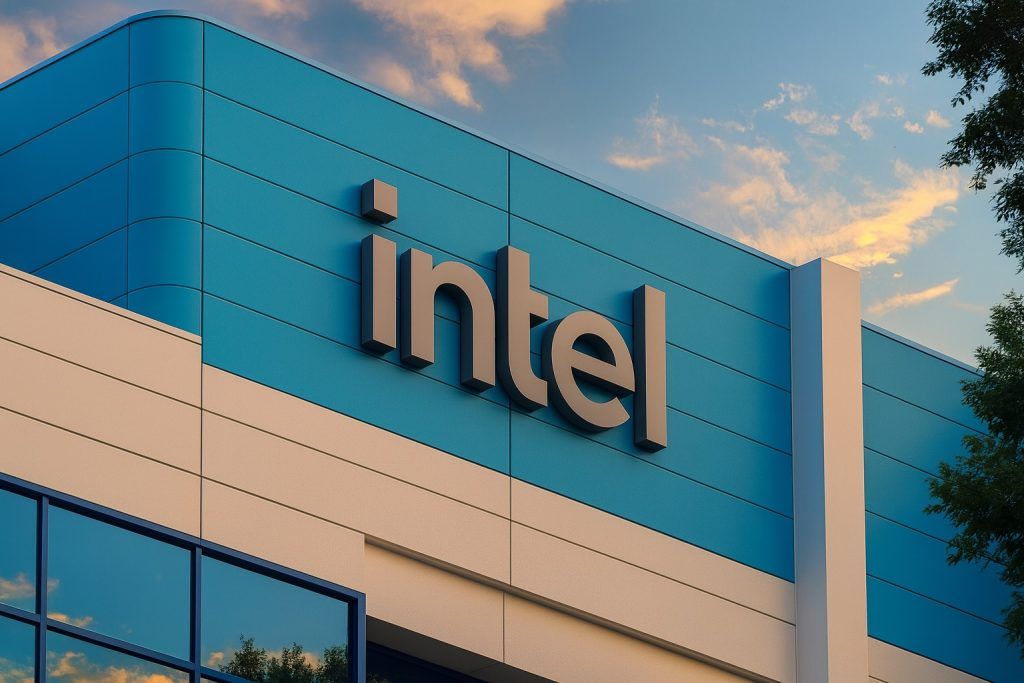- Stock price (Oct. 22, 2025): ~$7.00, having surged hundreds of percent in 2025 [1] [2].
- 2025 YTD gain: +300–450% (retail buying lifted OPEN from $0.50 in June to $10+ in mid-Sept [3] [4]).
- Recent developments: Shopify veteran Kaz Nejatian hired as CEO; co-founders Keith Rabois and Eric Wu returned to the board (Rabois now Chairman) [5] [6]. A quant fund (Jane Street) disclosed ~5.9% stake [7] [8].
- Financials: Q2/2025 revenue $1.6B and first positive adjusted EBITDA since 2022 [9], but GAAP losses persist and Q3 guidance calls for lower revenue ($800–875M) and a ~$20–28M negative EBITDA [10].
- Analyst view: Wall Street is largely bearish – consensus rating “Sell” and average 12‑month price target ~$1–$1.45 [11] [12]. Yet online forums and some investors remain highly bullish, viewing Opendoor’s AI-driven platform as a long-term play.
- Competition: Zillow (ZG) and Redfin (RDFN) have exited iBuying (heavy losses) [13], leaving Opendoor as the only major public iBuyer. Other startups (Offerpad, Knock, etc.) exist but with far smaller scale.
Investors and founders celebrate a new era at Opendoor: after a meme-stock rally, the company named Shopify vet Kaz Nejatian (bottom left) as CEO and brought co-founders back to the board [14] [15]. The image symbolizes the blend of real estate and technology in Opendoor’s strategy.
Opendoor (NASDAQ: OPEN) has been one of 2025’s most volatile stocks. After languishing near a multi-year low (~$0.50) in June, the shares rocketed to above $10 by mid-September – an astonishing ~1,600% jump over just three months [16]. By Oct. 22, 2025, OPEN trades around $7, reflecting a partial pullback (a drop of ~28% from the Sept 17 peak of $10.21) [17]. That still leaves the stock up roughly +350–450% on the year [18] [19]. The catalyst? A retail‑driven frenzy and a major management shake-up. In early Sept. Opendoor announced former Shopify COO Kaz Nejatian as CEO and the return of founders Keith Rabois and Eric Wu to its board [20] [21]. This “founder mode” pivot (championed by activist investor Eric Jackson) sent OPEN up ~80% on the day. Quant firm Jane Street later revealed a ~5.9% stake, lending some institutional credence to the rally [22].
Leadership Shake-Up and Strategy Shift
Under Nejatian’s leadership Opendoor is emphasizing technology and cost-cutting. He has vowed to use AI and data to make home-selling “radically simpler” [23]. Nejatian’s compensation is tightly tied to performance – Farient Advisors notes it could pay out up to $2.8 billion if stock milestones are met [24]. Meanwhile, Rabois (now Chairman) and Wu have infused fresh capital (roughly $40 million) and are slashing payroll. Rabois publicly called the firm “bloated” with ~1,400 employees and said it could run on “not more than 200” [25]. Opendoor also named Christy Schwartz as interim CFO in September amid this overhaul (Reuters via Yahoo Finance). In short, the new team is tightly focused on reducing losses and repositioning Opendoor for growth.
On the financial side, Opendoor reported its best quarter in years in Q2 2025 (ended June 30). Revenue was $1.6 billion and – for the first time since 2022 – adjusted EBITDA turned positive [26]. CEO Carrie Wheeler noted that this progress came “even as housing market conditions continued to deteriorate” [27]. Opendoor sold 4,299 homes in Q2, up 5% year‑on‑year, but it only purchased 1,757 (down 63%) as it hoarded less inventory to protect margins. Management’s Q3 outlook is conservative: it sees $800–875 M in revenue with a roughly -$25 M adjusted EBITDA loss [28]. (Wheeler has warned the housing market will remain weak and sees “no near-term catalyst” for improvement [29].) The cash cushion (roughly $780–810 M as of mid-2025) should last a couple of years, but Opendoor’s continued solvency hinges on a turnaround in home prices and mortgage rates.
Analysts and investors debate Opendoor’s future as its stock trades volatilely. Some (like hedge-funder Eric Jackson) cheer the new leadership, calling chairman Keith Rabois “the smartest” person in tech [30]. Others point to Opendoor’s razor-thin ~8% profit margin on home sales [31] and note that Zillow and Redfin both abandoned iBuying after heavy losses [32]. Shown: a trader analyzing market data (conceptual).
Investor opinion on Opendoor is sharply divided. Prominent backers note that with Zillow (ZG) and Redfin (RDFN) long gone from the iBuyer game, Opendoor has a “second chance” to dominate the space – hence Jackson’s enthusiasm. On Sept. 11, Jackson tweeted that “there is NO ONE as smart as Keith in tech. And…as shareholders we couldn’t be in better hands” [33]. That kind of bullish, retail‑driven narrative helped fuel what many are calling a new “meme-stock” mania (Opendoor’s year‑to‑date gain far outstrips the broader markets) [34] [35].
But Wall Street professionals remain skeptical. As one Motley Fool analyst put it, he “personally wouldn’t invest” in a home-flipping model, citing Zillow and Redfin as cautionary tales [36]. He pointed out that Opendoor’s business is still losing lots of money and that its gross margins are minuscule – roughly 8.3% in the first half of 2025 [37]. “Unless there is a material improvement in its fundamentals,” he warned, “Opendoor will probably not hold onto its recent gains” [38] [39]. Such skepticism is reflected in the consensus stock forecast: as of Oct 2025, four of six analysts rate OPEN a sell, and the average 12-month price target is only about $1–$1.45 [40] [41] – implying an ~85–90% downside from current levels.
Stock Outlook and Competitive Landscape
Given these mixed signals, Opendoor’s outlook is a wide-open question. A strong post-COVID housing recovery (aided by further Fed rate cuts) could vindicate the bull case; indeed some retail investors openly compare Nejatian’s vision to a “Tesla for homes”. In fact, Opendoor was added to the new Roundhill MEME ETF alongside other viral stocks, underscoring how much of its recent moves are sentiment-driven [42]. On the other hand, any supply glut or rate shock could slam the stock. Veteran investors note that Opendoor is still burning cash and will likely need further capital raises if home prices don’t firm up soon. Legendary short-seller George Noble has even dubbed Opendoor a “clown show” in social-media posts.
Looking forward, the next major catalyst is the Q3 2025 earnings report (scheduled Nov. 6, 2025 [43]). That release and CEO commentary could swing investor sentiment again. Meanwhile, Opendoor is pushing new products (agent partnerships, AI pricing tools, “Exclusives” agent-matching program) to diversify revenue and improve efficiency. In a market now devoid of other public iBuyers, Opendoor has a clear runway if it can survive the real estate downturn. As one Tech news analysis put it, the company may have a “unique second chance” to own the online home-flip market – but only if its digital tools and cost cuts can finally deliver sustainable profits.
Sources: Official filings and press releases [44] [45]; Bloomberg/Business Insider reports [46] [47]; Investopedia and Motley Fool analyses [48] [49] [50]; stockdata from MarketWatch/StockAnalysis [51] [52].
References
1. www.investopedia.com, 2. stockanalysis.com, 3. ts2.tech, 4. www.investopedia.com, 5. www.businessinsider.com, 6. ts2.tech, 7. www.investopedia.com, 8. www.investopedia.com, 9. www.globenewswire.com, 10. www.globenewswire.com, 11. stockanalysis.com, 12. www.investopedia.com, 13. www.nasdaq.com, 14. www.businessinsider.com, 15. ts2.tech, 16. ts2.tech, 17. stockanalysis.com, 18. www.investopedia.com, 19. ts2.tech, 20. www.businessinsider.com, 21. ts2.tech, 22. www.investopedia.com, 23. ts2.tech, 24. farient.com, 25. ts2.tech, 26. www.globenewswire.com, 27. www.globenewswire.com, 28. www.globenewswire.com, 29. www.nasdaq.com, 30. www.businessinsider.com, 31. www.nasdaq.com, 32. www.nasdaq.com, 33. www.businessinsider.com, 34. www.investopedia.com, 35. ts2.tech, 36. www.nasdaq.com, 37. www.nasdaq.com, 38. www.nasdaq.com, 39. www.nasdaq.com, 40. stockanalysis.com, 41. www.investopedia.com, 42. stockanalysis.com, 43. stockanalysis.com, 44. www.globenewswire.com, 45. www.globenewswire.com, 46. www.businessinsider.com, 47. www.businessinsider.com, 48. www.investopedia.com, 49. www.nasdaq.com, 50. www.nasdaq.com, 51. stockanalysis.com, 52. stockanalysis.com










